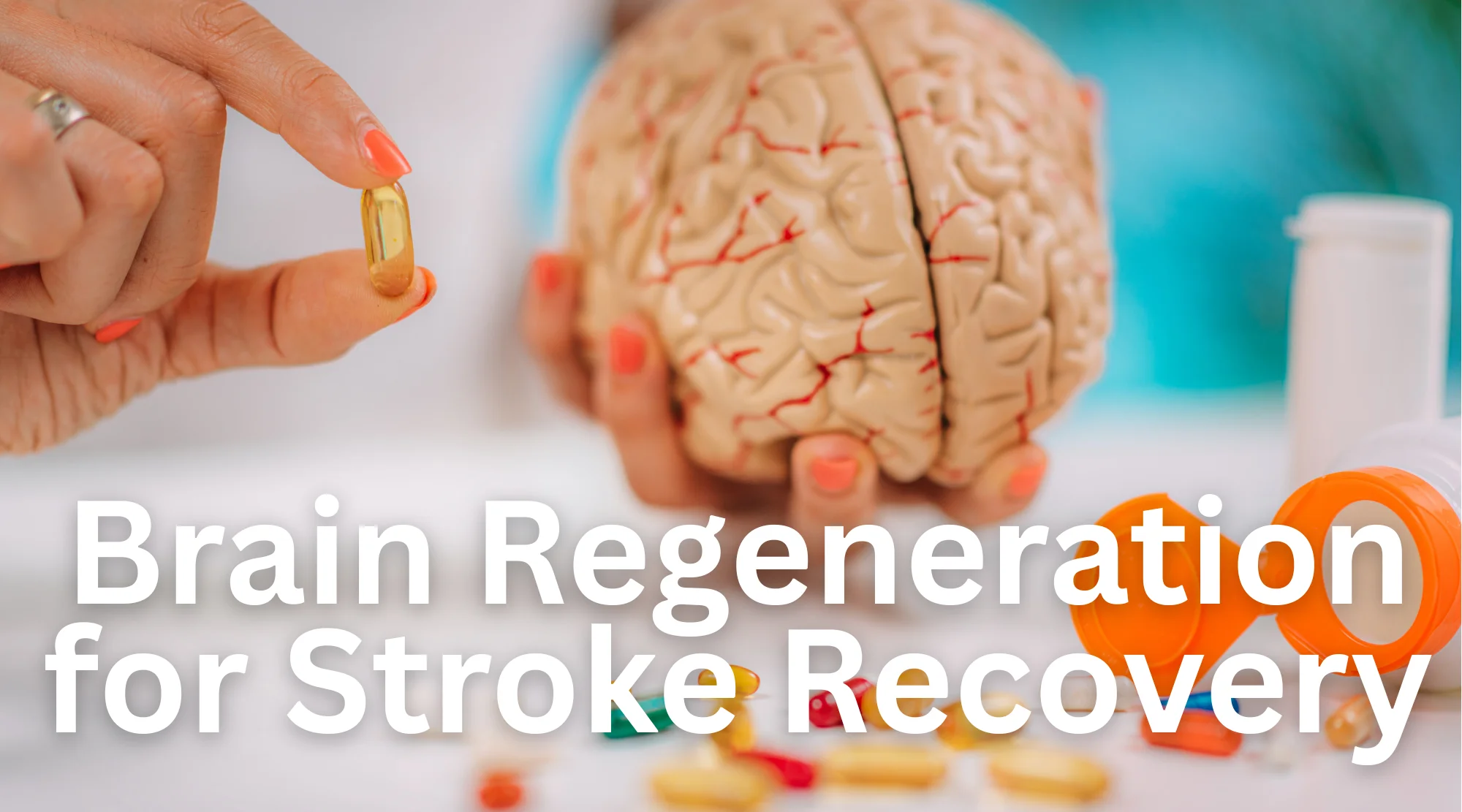Revolutionary Pill Offers Hope for Brain Recovery: Understanding the Potential and the Path Forward
The promise of a better future for individuals grappling with neurological conditions is on the horizon. Recent advancements in neuroscience have ignited hope for a revolutionary approach to brain recovery, with a groundbreaking pill emerging as a potential game-changer. This innovative treatment aims to stimulate the brain’s natural ability to heal itself after suffering from strokes, traumatic brain injuries, or other neurological impairments, challenging long-held beliefs about the brain’s limited regenerative capacity. This article explores the science behind this potential breakthrough, its implications, and the journey ahead, providing a comprehensive understanding for those concerned with their health and well-being.

Unveiling the Science: How the Pill Works
The core of this innovative treatment lies in its ability to tap into the brain’s inherent potential for self-repair. The pill is designed to activate specific molecular pathways that promote neurogenesis – the process of creating new brain cells. This is a significant shift from the traditional understanding that adult brains have a limited capacity to generate new neurons after an injury. The pill is designed to target inflammation and potentially boost the growth of new cells, offering a multifaceted approach to brain recovery. This is a particularly exciting development, opening the door for a treatment option that can potentially reduce the need for extensive physical therapy and improve cognitive and motor functions in affected individuals.
The Target: Stroke Recovery and Beyond
The primary focus of this revolutionary treatment is the recovery of stroke patients. Strokes, which occur when blood flow to the brain is disrupted, lead to cell death and subsequent neurological deficits. The pill aims to mitigate these effects by promoting the growth of new neurons and neural connections, potentially restoring lost function. This approach has the potential to reshape the treatment landscape for stroke patients. While the current treatment options primarily focus on managing the symptoms and providing rehabilitation, this pill offers the promise of stimulating the brain’s natural healing mechanisms.
The implications of this groundbreaking pill extend beyond stroke recovery. Research suggests that this treatment could potentially aid in healing traumatic brain injuries (TBIs) resulting from accidents or sports-related incidents. TBIs often cause lasting damage to the brain, impacting cognitive function, behavior, and overall quality of life. By promoting the growth of new brain cells and facilitating the repair of damaged neural circuits, this pill has the potential to significantly improve outcomes for individuals with TBIs. This opens the door for pharmacological interventions to complement or even replace traditional rehabilitation methods.
From Research to Reality: Challenges and Considerations
While the potential of this pill is undoubtedly exciting, it is essential to acknowledge the challenges that lie ahead in translating these research findings into practical treatments.
Clinical Trials: The Road to Approval
Currently, the pill is undergoing clinical trials, with researchers carefully monitoring the results of using this drug in humans. These trials are crucial for assessing the efficacy and safety of the treatment. It is important to acknowledge that individual responses to the drug may vary depending on factors such as the severity of the injury and the timing of administration. The path from research to a fully approved and widely available treatment is a complex process that can take several years.
Regulatory Hurdles: Ensuring Safety and Efficacy
The development of any new medical treatment requires stringent regulatory oversight to ensure its safety and efficacy. Regulatory bodies, such as the Food and Drug Administration (FDA), play a crucial role in evaluating the evidence gathered from clinical trials and making decisions about whether to approve the drug for use. The FDA’s primary goal is to protect public health by ensuring that any approved therapies do not introduce unforeseen risks.
Ethical Considerations: Balancing Innovation and Patient Safety
Rapid innovation in the field of medicine often presents ethical considerations. Balancing the desire to bring new, potentially life-changing treatments to patients with the need for rigorous safety standards is a delicate task. This requires careful consideration of the potential risks and benefits of the treatment, as well as the rights and well-being of the patients participating in clinical trials. It’s important to assess potential side effects and the long-term impact of such treatments.
The Wider Landscape: Potential Applications and Benefits
The implications of this breakthrough pill extend beyond stroke recovery. The research suggests that this treatment could potentially address a wide range of neurological conditions, opening new avenues for treatment and care.
Addressing Traumatic Brain Injuries (TBIs)
As mentioned earlier, this pill has the potential to revolutionize the treatment of TBIs, which often result in lasting neurological damage. By promoting neurogenesis and facilitating the repair of neural circuits, the pill could improve cognitive function, behavior, and quality of life for those affected by TBIs. This would mean a huge improvement over existing rehabilitation methods.
Tackling Neurodegenerative Diseases
Beyond strokes and TBIs, this research also opens doors to treating neurodegenerative diseases, such as Alzheimer’s and Parkinson’s disease. These conditions are characterized by the progressive loss of neurons, leading to a decline in cognitive and motor functions. The pill’s capacity to stimulate neurogenesis and promote neural repair holds the promise of slowing down or even reversing the progression of these devastating diseases.
A Boost for the Pharmaceutical Industry
The development of a successful pill for brain recovery could represent a lucrative opportunity for pharmaceutical companies. With the potential to address a wide range of neurological conditions, the market for such a treatment would be vast. This would likely incentivize further research and development, leading to even more innovative therapies in the future.
Complementary Therapies and Lifestyle Changes
While a revolutionary pill holds immense promise, a holistic approach to brain health is key. This would combine pharmacological interventions with lifestyle changes.
Exercise and Physical Therapy
The benefits of physical activity for brain health are widely recognized. Regular exercise can stimulate neurogenesis and improve cognitive function. In stroke recovery and TBI treatment, physical therapy plays a crucial role in restoring motor function and promoting the formation of new neural connections. For more information, read our article on the benefits of a 30-Minute Walking Workout: Maximize Calorie Burn and Boost Joint Mobility.
Cognitive Training and Mental Stimulation
Cognitive training and mental stimulation can also enhance brain health. Activities such as learning new skills, playing brain games, and engaging in social interactions can help improve cognitive function and protect against age-related cognitive decline. This can also be achieved in luxury gyms. Read our article on the subject: Luxury Gyms: Gen Z’s Fitness Revolution and the Rise of Wellness.
Diet and Nutrition
A healthy diet can contribute to brain health. A diet rich in fruits, vegetables, and omega-3 fatty acids can provide the brain with essential nutrients and protect it from damage. Studies show that the best diet is one that’s balanced and helps with cognitive function.
The Future of Brain Health: A New Era Dawns
The development of this revolutionary pill represents a pivotal moment in the field of neuroscience. If proven effective, it could redefine the paradigms of recovery for individuals affected by neurological conditions. This innovation offers new hope for patients and signals a shift in investment and research toward neurotherapeutics.
The journey ahead requires patience, as the full results of clinical trials are expected in the coming years. However, the initial findings are promising, and the potential benefits are profound. By understanding the science, the challenges, and the wider implications of this groundbreaking treatment, we can all be better equipped to navigate the exciting future of brain health. It’s also important to stay informed about your health and be aware of the habits you can ditch. Read our article Health Habits to Ditch Now: Expert Tips for a Healthier You.
In the quest to improve our well-being, it’s also important to be informed. If you are in need of assistance, you can turn to AI therapy. However, it is important to be aware of the risks. Check out our article on the subject: AI Therapy: 5 Expert Tips to Protect Your Mental Health While Using Chatbots.
The journey ahead requires patience, as the full results of clinical trials are expected in the coming years. However, the initial findings are promising, and the potential benefits are profound.
Conclusion: Embracing Hope and Navigating the Future
The development of a pill that stimulates brain regeneration marks a significant leap forward in our understanding of the brain’s capabilities. This innovation offers renewed hope for individuals affected by strokes, traumatic brain injuries, and other neurological disorders. The path to widespread availability and utilization is complex, requiring rigorous testing, regulatory approvals, and ethical considerations. Nevertheless, the early results and the potential benefits are so compelling that they inspire a sense of cautious optimism. By remaining informed, supporting scientific advancements, and adopting a holistic approach to brain health, we can all play a role in embracing the future of neurotherapeutics.














1 comment